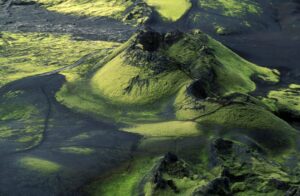People fled in panic when the quake struck. They had never experienced anything of this strength before. There were no casualties but damage amounted to $150,000.
On June 27, 1925 an earthquake of magnitude 6.6 struck Montana near Helena. It was followed by several aftershocks. People fled in panic into the streets. Prior to the main shock a lightning storm had raged, six persons being knocked to the ground and stunned by bolts that struck in various parts of the city. Many years later everybody was still talking about this earthquake, wondering when and where the next one would hit, or picking up a new story about the last one. The quake on June 27 was really a brand new experience for Montana because it was a real earthquake, not one of the little baby quakes that had occurred in past years.
The quake was felt at strengths of 2 to 3 from Seattle to the South Dakota line, from Spokane to Thermopolis and Casper, Wyoming, and as far north as Calgary, Alberta. The most severe damage occurred in the counties of Gallatin, Three Forks, Logan, and Lombard. Because no large cities were near the epicenter, property damage did not exceed $150,000. At Manhattan, the community high school and the grade school were both severely damaged, but reinforced concrete buildings were not affected. Many chimneys were toppled.
At Three Forks, walls of the schoolhouse bulged on all sides, and its foundation and basement were damaged. A church, whose walls were not tied together by an upper floor, also sustained heavy damage. Later shocks demolished the walls. Almost all masonry buildings showed cracks and damage, but because most of the buildings were of frame construction, they sustained only cracks in plaster and some fallen chimneys.
At Logan, the poorly designed and constructed schoolhouse was damaged heavily. However, a large brick roundhouse sustained only a few cracks. As at Three Forks, most of the buildings at Logan were of frame construction and therefore sustained only cracks in plaster and destruction of chimneys. At Lombard, where the Chicago, Milwaukee, and St. Paul Railway crosses the Northern Pacific Railway, large boulders were dislodged. A huge rockslide blocked the Deer Park entrance to the Lombard Tunnel on the Chicago, Milwaukee and St. Paul Railway.
Cracks occurred in graded and filled roads but not in cuts or where the natural surface had not been disturbed. Approaches to many bridges settled by as much as one foot. One spring formed near Josephine and began to flow, but other springs and sources of water in the neighborhood ceased to flow. Landslides were reported to have hemmed in passenger trains loaded with vacationers.
Pavements and buildings were cracked in many cities and some buildings were demolished. The Olympian, fast train of the Chicago, Milwaukee, and St. Paul railroad between Chicago and Seattle, is believed to have been stalled between two of the avalanches in the vicinity of Three Forks. Two other trains, one a Milwaukee train and the other a Northern Pacific, were hemmed in by the slides.
There were no reports of material damage to Yellowstone Park, and the quake is believed to have no connection with the avalanche in the Gros Ventre River valley near Jackson, Wyoming early that week. Out of all the reports of panic and minor property damage there were none telling of any loss of life.
An earthquake insurance policy for $115,000 was written a day after the earthquake. It was taken out on behalf of the First National bank building in Missoula. According to Ira C. Watson of the Watson Agency, who wrote the policy, this was the first earthquake insurance policy ever written in Montana. Mr. Watson said there were other business blocks in the city upon which the owners were considering earthquake insurance and that other policies could be written over coming days. The railroad tracks were restored to service within a week.
A length of track had to be installed to bypass temporarily the area blocked in Sixteen Mile Canyon near Lombard. Immediately after he returned from a conference, Governor Erickson arranged for some of his staff to form an executive committee to handle subscriptions for restoration work. Montana has a history of large, damaging earthquakes but relatively little is known about the faults that produced those earthquakes. Only the 1959 Hebgen Lake earthquake caused surface rupture and thus revealed the causal fault lines. The faults for other damaging earthquakes, including this 1925 one did not have surface breaks.





















